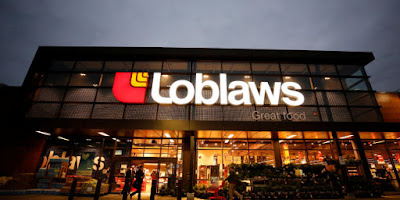Original post 3
Loblaw is a Canadian company selling food and pharmacy, it
owns a network of corporate and independently operated stores in communities
across the country.
Social media is a powerful marketing and communications tool, and a venue for customer service. All Loblaw employees cares about customers. Their priority goal is to meet the needs of the customers in their stores. Loblaw offers their customers with clear, accurate information about their pricing, products, programs and services, through their communication and advertising (https://www.loblaw.ca/content/dam/lclcorp/pdfs/Governance/LCL_Code_of_Conduct_2017_EN.pdf). Loblaw invites customers to review their store brand products and make changes to these products (recipes and packaging) based on reviews. This is a good strategy for grocery stores, because their customers repeat different products and new customers at each visit. Comments attract users to use new products and provide feedback loops for them to respond to familiar products.
Loblaws has been listening to what Canadians are saying about food.
Loblaw has taken it a step further and has partnered with Google
Inc to create a “Food Pulse Index”. “The index is the first to track
food trends nationally and by province, on the basis of Google search insights.
Insights will be grouped by theme, search trends will be assessed against
thousands of related words and terms, information will be assessed regionally
and nationally, and the results will be presented visually and with editorial
at pc.ca (https://smbp.uwaterloo.ca/2014/10/loblaws-is-listening-to-canadians/).
Embracing the groundswell
In April 2013, Loblaw launched a test project in Ontario and expanded to other provinces in November 2013. The plan aims to provide points based on consumers' buying habits. The plan is different from other incentive schemes, because the structure is not based on the total purchase price. On the contrary, they only collect points or add store preferences when purchasing products. The plan gives Loblaw the opportunity to push forward purchasing decisions for certain products and to use purchase history to determine when and when individual customers might buy (https://smbp.uwaterloo.ca/2014/10/loblaws-is-listening-to-canadians/).
This project provide new chance of developing something Loblaw's consumers want. Loblaw's products could be continuously changing or improvement as long as consumers's habits change.
Eat together campaign
Loblaw published a movie which is called " Eat together" in 2016. As the PC team's research shows that, only 38% of Canadians eat four to six times a week per week. Most importantly, 45% of Canadians watch TV while eating, 15% listen to the radio, and 14% use the Internet during meals. This movie aims to celebrate the time that people spent on food and the power to bring communities together. The film has been watched more than 11 million times, with seven million of those on social and digital channels. With over 27,000 shares, it’s the most viewed video in Loblaw history (http://www.canadiangrocer.com/top-stories/loblaws-eat-together-campaign-sees-success-70352)
This campaign encouraged people to share their eat together stories on social media platforms, with #Eattogether hashtag, a lot of people joined in this campaign. The campaign not only promotes interpersonal relationships, but also links between consumers and Lablaw. The campaign inspirit people do not forget people around them, and eat together is a good and warm way to build relationships. I believe this campaign help to publicize Loblaw's brand and build better image and reputation.



Comments
Post a Comment